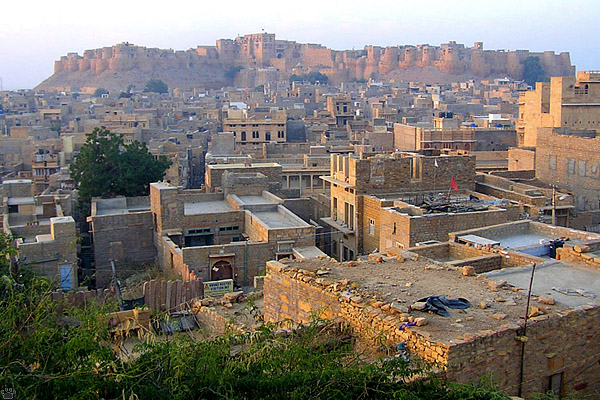
View of Jaisalmer, Rajasthan.Part 7. Rajasthan: the Golden City
The most exotic and authentic city in Rajasthan, if not in all of India, is Jaisalmer, located in the Great Thar Desert not far from the Pakistani border. It still looks almost the same as it did in the 17-19th centuries, when the older part of the city was built. Golden-colored Jurassic sandstone was the main construction material.
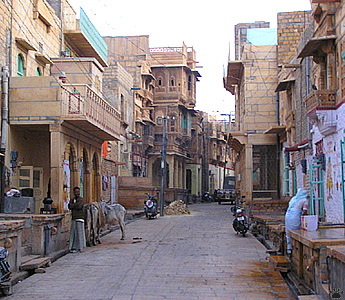
Street in the Old City, Jaisalmer. |
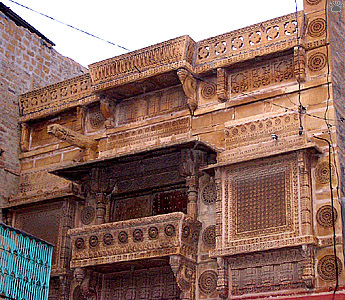
House in the Old City, Jaisalmer. |
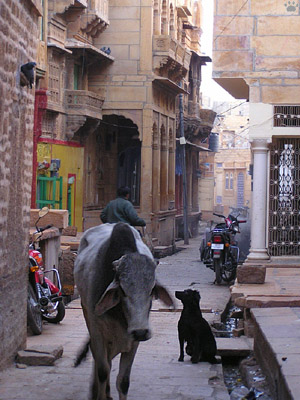
Street scene, Jaisalmer. |
Of course, in many ways it's just like any other Indian city: hot, dusty, noisy, crowded, filled with garbage, sewage, feral dogs, cows, beggars, stupid tourists in search of "spirituality", touts, rats and flies. But somehow it still feels like a nice place. |
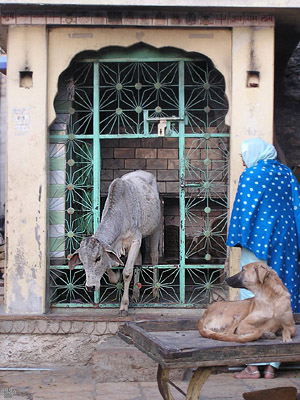
Chasing cattle from a shrine, Jaisalmer. |
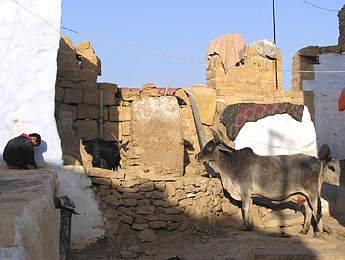
Street scene, Jaisalmer. |
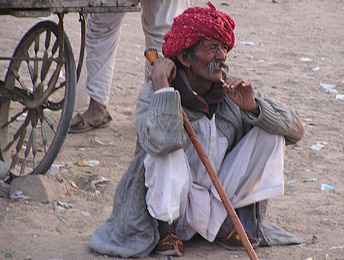
City resident, Jaisalmer. |
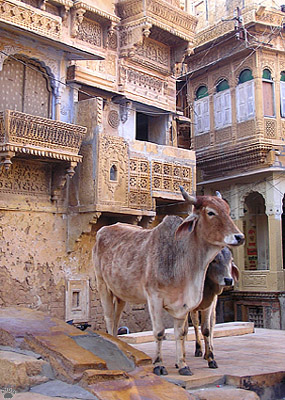
Street scene, Jaisalmer. |
One reason Jaisalmer is so well preserved is that it has gone through a period of deep economic decline, which lasted through most of the 20th century. At the time when most other Indian cities were going through a runaway construction boom, it remained sleepy and old-fashioned, especially after the Partition has severed ancient trade routes. |
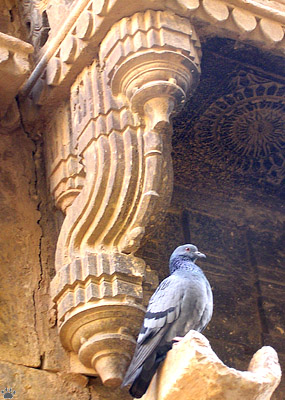
Rock pigeon (Columba livia), Jaisalmer. |
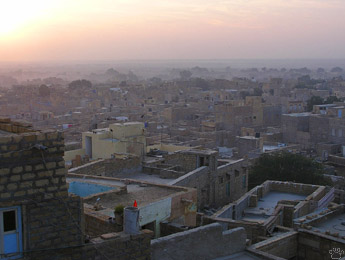
Sunrise, Jaisalmer. |
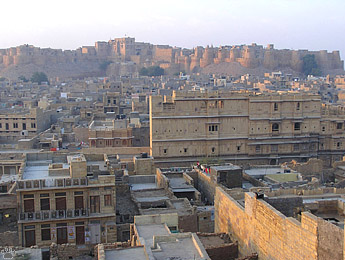
Nathmal-ki-Haveli (c. 1885), Jaisalmer. |
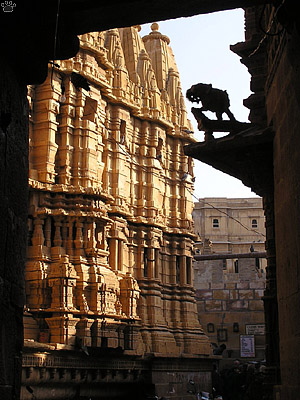
Chiki Haveli (c. 1817), Jaisalmer. |
Recently, the city has been revived by mass tourism and by the India- Pakistani arms race. Now it is a major military base. If you want to see it without highrise hotels and dozens of tour buses, you should probably try to get there sometimes soon. |
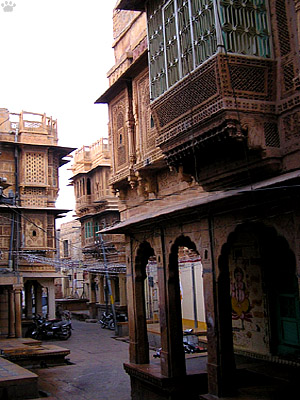
Salim Singh Haveli (c. 1695), Jaisalmer. |
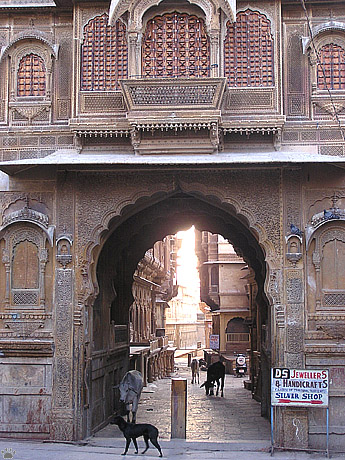 |
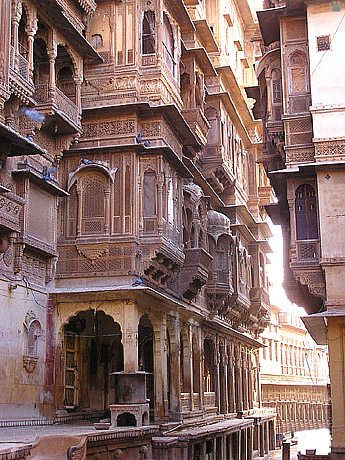 |
| Patwa-ki-Haveli (c. 1800-1860), Jaisalmer. |

Patwa-ki-Haveli. |
The most beautiful traditional houses in the Old City are called havelis. The best one is Patwa-ki- Haveli, built by five Jain brothers (it took them about 60 years). |
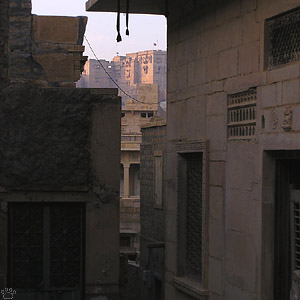
View of Nathmal-ki-Haveli from a city street. |
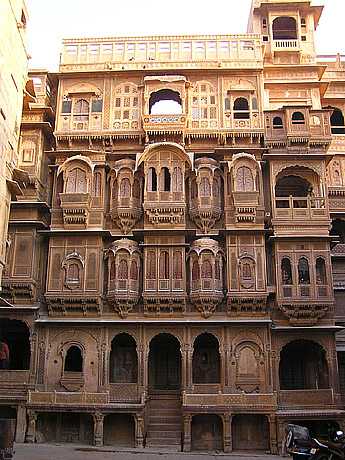 |
 |
| Patwa-ki-Haveli. |
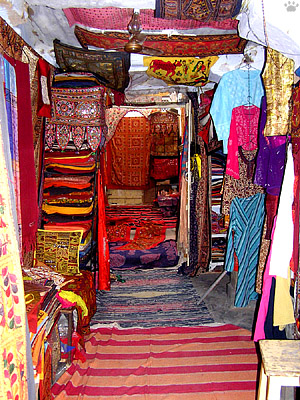
Textiles store, Jaisalmer. |
Finding your way in the city's narrow streets might be tricky, so most visitors use rickshaws to get from one place of interest to another. Step a few feet away from the rickshaw routes, and you might not see another foreigner for a month. |

Kulaka Haveli (c. 1912), Jaisalmer. |
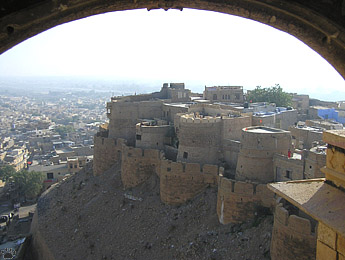 |
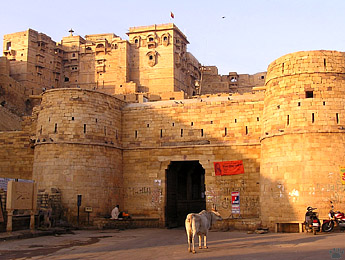 |
| Jaisalmer Fort. |
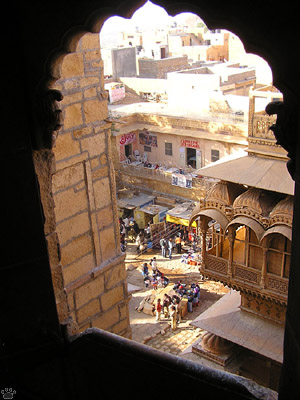
Inside Jaisalmer Fort. |
A city within a city, the mighty Jaisalmer Fort (built by Bhati clan in 1156) is protected by 98 towers. About two thousand people, Brahmins and Rajputs, live inside this hilltop fortress; there are also six major temples and many museums. |

View from Jaisalmer Fort. |
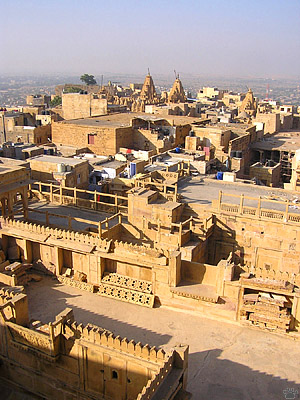
View from the roof, Maharawal Palace. |
The walls didn't always protect it: in 1294, after a 12-year siege by Muslim armies, the Rajputs of the Fort had to commit johar: men rode out to die in a desperate battle, while all women and children committed suicide on a funerary pyre. |
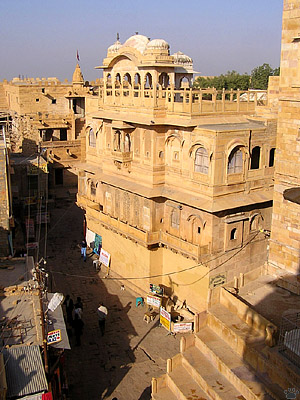
Maharawal Palace, Jaisalmer. |
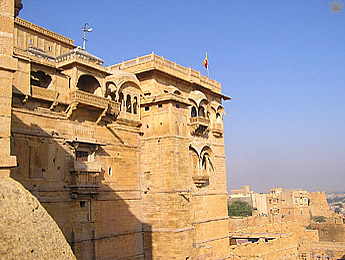 |
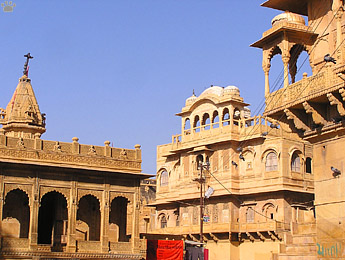 |
| Maharawal Palace. |
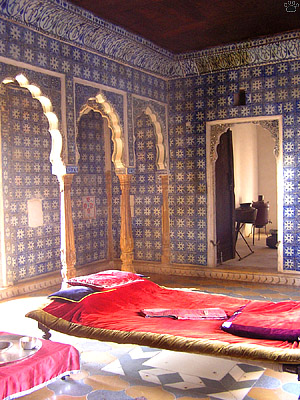
Inside Maharawal Palace. |
Later the relations with Muslims had somewhat improved, and the Fort was never taken again (some less fortunate Rajasthan cities have gone through 2-3 johars). The palace of local rulers, called Maharawal, is now an interesting museum. |
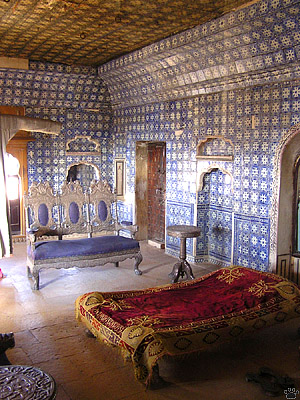
Inside Maharawal Palace. |
 |
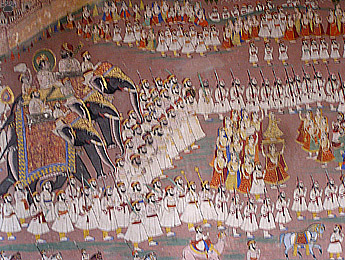 |
| Wall paintings, Maharawal Palace. |
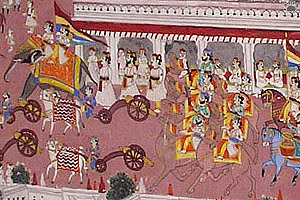
Detail of a wall painting, Maharawal Palace. |
In addition to paintings, sculptures, and other items collected over 900 years, the palace has a great view from the roof. |

Detail of a wall painting, Maharawal Palace. |
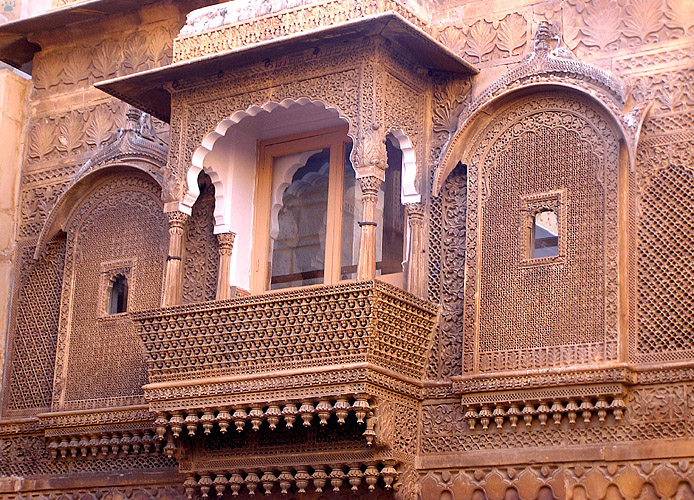
Window, Maharawal Palace.
|
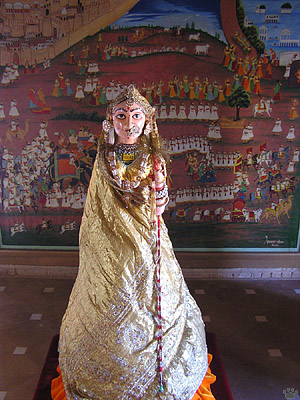
Doll, Maharawal Palace. |
The relations between the Rajputs and commoners weren't always peaceful. In 1800, a prime minister, Salim Singh, who's father had been killed for demanding that a Rajput prince repaid a loan, tried to bankrupt the royal family by high taxes and loan rates. |
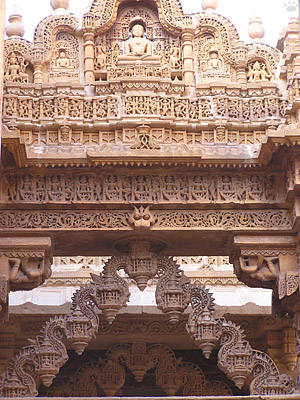
Archway detail, Maharawal Palace. |
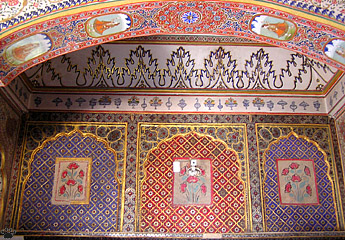
Inside Maharawal Palace. |
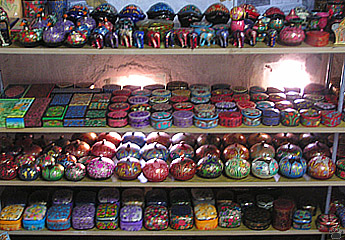
Box collection, maharawal palace. |
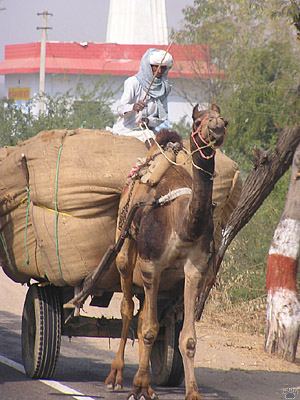
On the road, Jaisalmer. |
In process, he almost destroyed the economy of the entire town. Finally, one Rajput stabbed him, and his own wife made sure he wouldn't recover by poisoning his wound. His splendid haveli is now a tourist attraction. |
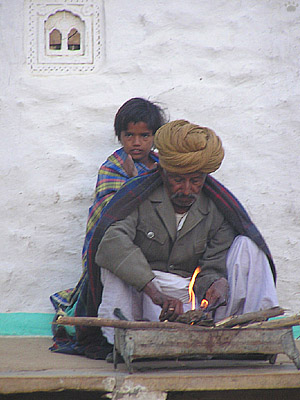
Camel driver, Jaisalmer. |
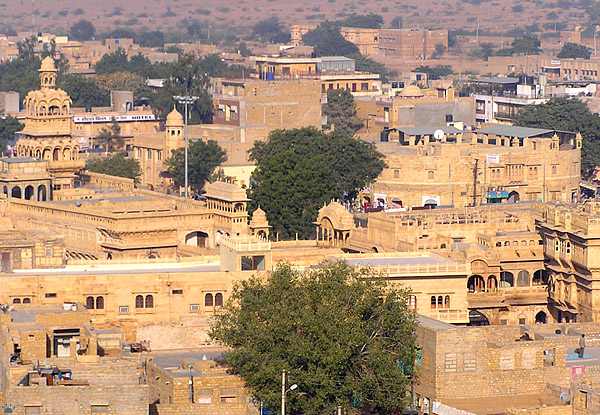
View of the Old City from Jaisalmer Fort.
|
Part 8: Rajasthan (continued)
Back to Part 6
Home
|